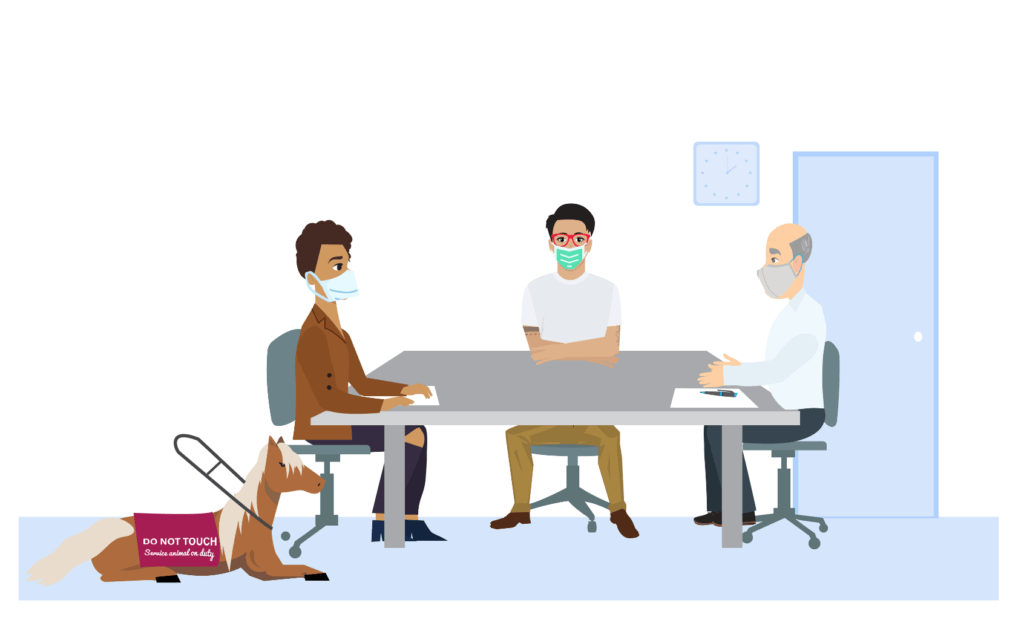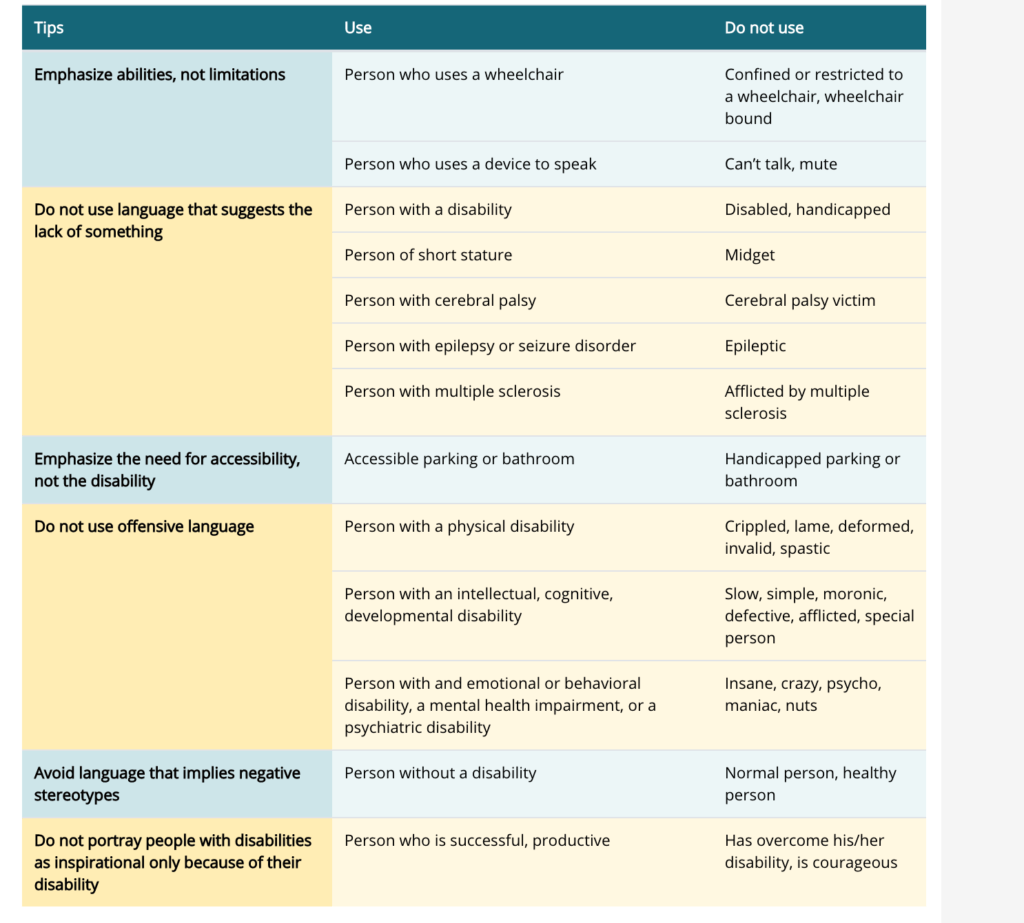Respectful Communication _review


Carrie: Planning for ALL means respectful language. What you say reflects your attitude, doesn’t it?
When I was at the mall, one of the store clerks said goodbye and “bless your heart” in a certain tone. I felt talked down to and disrespected. My daughter was with me and got super upset.
If you were Carrie, what would you have done?
There’s no one right way to respond to something like this. It depends on the situation. It depends on my mood, and who I’m speaking with.

PJ: Carrie, what a crummy experience. People should realize that inclusion starts with respect.

Carrie: Sometimes people just don’t know and sometimes people mean it, you know? Words matter. Words reflect attitudes. We’ve talked about the negative impacts of emergencies on People of Color and Indigenous people. 4ALL means respect for all parts of your identity. As you work on whole community planning, you may get to know community members or groups that you didn’t know before. Part of respectful collaboration is checking with community groups about how they prefer to be identified.
Planners may not mean disrespect, but they may not know current or respectful words to use. We’ve found it helpful to share disability “etiquette” resources with local planners. We’ll share some resources with you after your last visit.
Take a look at these respectful language tips. No need to take notes. They’ll be on the Resource List.

EM: We’ve trained our emergency management and public health preparedness staff, first responders and other local government officials about respectful and inclusive language. The training includes explaining identity-first and people-first language.

PJ: Some people prefer to use “identity-first” language, and say they’re “disabled.” Other people prefer to identify themselves as a “person with a disability.” This is “person-first” language. Here in Disasterville, you’ll hear both used.
Which of the following descriptions would NOT be an example of person-first language?
A person who uses a wheelchair
Person-first language puts the individual at the front of the description, showing that the person is not just their disability. Putting the “person” first also emphasizes their humanity. Try again for an example that is NOT person-first language.
Deaf woman
“Deaf woman” is an example of identity-first language, not person-first language. Many Deaf people consider Deafness to be a culture and part of who they are. Other examples of identity-first language are “autistic man” or “disabled person.” Individuals who identify this way would say that their autism or disability is central to who they are, and they’re proud of that.
Person with Down syndrome
Person-first language puts the individual at the front of the description, showing that the person is not just their disability. Putting the “person” first also emphasizes their humanity. For example, a person with Down syndrome may want to be described in other ways, not only Down syndrome. Try again for an example that is NOT a person-first language.
Person without a disability
Person-first language puts the individual at the front of the description, showing that the person is not just their disability. Putting the “person” first also emphasizes their humanity. Try again for an example that is NOT person-first language.
Person-first language puts the individual at the front of the description, showing that the person is not just their disability. Putting the “person” first also emphasizes their humanity. For example, a person with Down syndrome may want to be described in other ways, not only Down syndrome.
“Deaf woman” is an example of identity-first language. Many Deaf people consider Deafness to be a culture and part of who they are. Other examples of identity-first language are “autistic man” or “disabled person.” Individuals who identify this way would say that their autism or disability is central to who they are, and they’re proud of that.

Carrie: I was just talking to Sondra about this. Sondra is a college student who is helping us create public education materials on person-first and identity-first language. Let me call her and get her take on this.
?Sondra? Hey girl! I’m going to put you on speaker for a minute. Tell our trainee Terrye what you were telling me about your disability awareness materials.

Sondra ?: I’m between classes so I can talk real quick. When we developed our materials, we made sure to check with folks with disabilities. We wanted to know whether we were using language correctly and respectfully. Different folks had different views on language, but they all agreed it was important to respect those differences. Just like emergency planning, disability is not one-size-fits-all. It’s about how people with a condition or disability want to be described, and we defer to them.

Carrie: Thanks a ton, Sondra! I’ll say goodbye so you can get to your next class.

EM: Disability organizations are familiar with respectful language. The issue is how to handle it if you’re at a meeting with an emergency planner or you’re reading a planning document and you sense bias, misconceptions, or lack of respect. It’s important to share with local planners the community’s preferred language to describe a population or group.
?Read these lines from a local emergency plan. This is the part of the plan that describes how residents will receive COVID-19 vaccines. What do you notice about this language?
People with Disabilities
Those who have mobility limitations or difficulty following directions should be assigned an escort throughout the Emergency Dispensing Site COVID-19 vaccination process.
Make sure that at least one Emergency Dispensing Site in this community or a neighboring community is compliant with the Americans with Disabilities Act (ADA).
EM’s Response
Sometimes the bias is clear and sometimes it’s more nuanced. Both sentences are disrespectful.
Sentence 1 assumes that everyone with a mobility disability will need help to move through an emergency dispensing site to get their vaccine. This is biased and not accurate. Some people with mobility disabilities may need this kind of help and some may not.
The words “difficulty following directions” could apply to anyone with or without a disability. The plan’s author has made another assumption about people with disabilities. A more inclusive way to think about this would be to have emergency dispensing site staff available to give help as needed.
Sentence 2 also makes an assumption. The planner implies that it’s ok to send someone with a disability to another community to receive their vaccine. That would be a civil rights violation. Every community is responsible for its residents. If you don’t send everyone to another community to receive the vaccine, then you can’t just send people with disabilities there.
Click the quiz link below to check your learning and continue.

